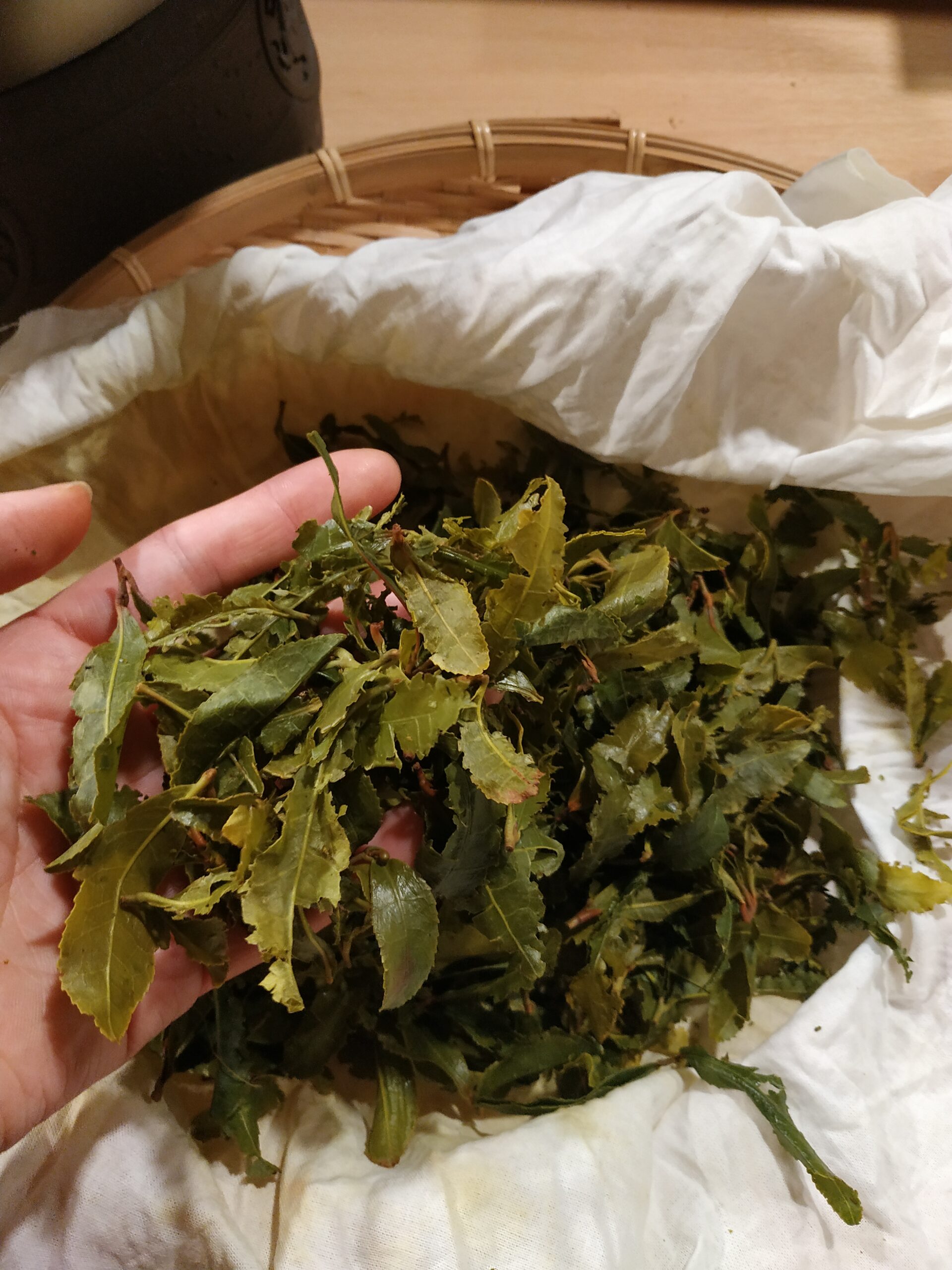Description
To book our online workshops, just contact us in advance to book the time.
The course is divided into the introduction of scientific theory, hands-on production of dark tea and practice of professional evaluation. The course lasts for 45 minutes. Participants can master the simple method of making dark tea and learn more about the formation mechanism of dark tea quality, the relationship between primary processing technology and dark tea quality, traditional processing method and new dark tea processing. Participate in picking, processing and evaluating. If experiencing the whole process of dark tea processing, please book at least 2 class hours for 2 consecutive days. Participate in picking and processing only from May to September, other time will be focusing on theoretical knowledge and evaluating.
Dark tea 黑茶 [hēi chá] has many varieties and a long history back to around the 11th century, at that time of Northern Song Dynasty (1074) there was already the recordation of producing dark color tea from green tea. Dark tea belongs to post fermented tea, its fermentation degree will change with time. This kind of tea is mainly sold to Russia and other countries, as well as China’s border areas, most of which are sold domestically and a few are sold overseas. Therefore, it is customary to make the pressed tea made of dark tea into border selling tea. The earliest dark tea was produced in Sichuan. It was a border selling tea made of green Mao Cha by steaming and pressing. At first, the older green tea entered the tea horse exchange market. Due to the inconvenient transportation, especially Sichuan tea has to go through the Shu Road, climb the mountains and cross the Qinling Mountains. It is transported by horses and people. The transportation time on the way is very long. In addition, the packaging is simple, the moisture-proof function is poor, the sun and rain accelerate the aging of the tea, which is completely different from the quality of the original tea after arriving at the destination. The sales area adapted to this flavor. This phenomenon was fed back to the production area. Sichuan steamed pile fermented green tea and used the principle of heat and humidity to remove the coarse astringency of green tea. Hunan reformed the primary process and really created the primary dark tea by using the biochemical action of microbial extracellular enzymes. With a history of more than 400 years, the four major tea areas in China have produced dark tea, including Hunan dark tea (Anhua tea), Hubei dark tea (old Qing tea), Sichuan (South Road border tea and West Road border tea), Yunnan and Guangxi dark tea (Pu’er and Liubao).
The main processing process, green killing, rolling, wet/ water piling, drying. The fresh leaves of dark tea are coarser and older. They inhibit the enzymatic reaction by killing green. They are piled up before and after drying. In the process, there are many leaves, high temperature and humidity and long time, which promote the full automatic oxidation of polyphenols and the transformation of other substances. The consumption rate of catechin is relatively large, which makes the aroma of dark tea more mellow and dark. Wodui is to pile up the rolled leaves. Through the damp and heat effect in the pile and some microbial effects, some astringent and coarse taste are removed, and the chlorophyll is destroyed, so that the leaf color changes from dark green to yellowish brown, forming the quality characteristics of dark tea, orange yellow, mellow taste and so on. The process of pile fermentation is essentially a post fermentation process. Dark Mao Cha can be processed into basket packed dark tea (Xiangjian and Liubao square bag), pressed dark tea (dark brick tea, Hua brick, Fu brick, Kangzhuan, Jinjian), pressed sun dried dark tea (Qing brick, Tight tea, Round cake tea). Tea Blog
Contact us for an appointment:
Email: info@liu-tea-art.com
Tel.: 0049/51819010891
Address: Immserstr. 22 Alfeld (Leine) 31061 Germany



























